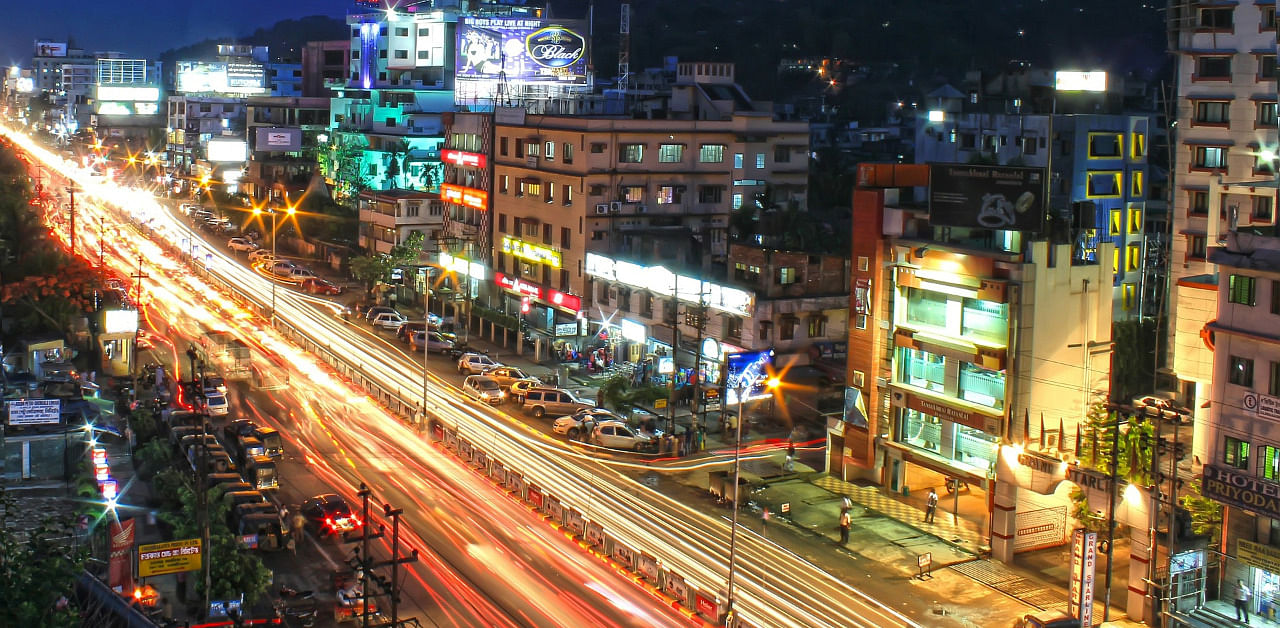
India, even though is highly vulnerable to disasters due to its geographical location, has made significant strides in reducing the loss of life in the recent past. This success can be attributed to systematic and improved efforts of disaster risk management in our country.
Two issues are central to the current disaster management model - a) risk assessment based on historical records of disasters, and b) district as a unit. The inadequacy of this model was clearly manifested in glacier burst in Uttarakhand and second such grey area inadequate disaster management at city level.
According to UN estimates (2015), in 1960s, twice as many people lived in rural settings (two billion) than in urban areas (one billion). But by the year 2007, urban and rural populations were almost exactly equal at 3.33 billion each and since then the global urban population was increasing steadily. In 2016, it was four billion, while the rural population was only 3.4 billion. In 2017, urban population was 55% of global population and was projected to increase to 68% by 2050 and India will have added 416 millions of urban dwellers.
This shift indicates not only a demographic shift, but a paradigm one that places towns and cities at the centre of the development trajectory of country, and assigning cities and towns a critical role in the structural transformation of our economy. Thus, economic prosperity will be dependent on seamless functioning of the city economy and any disruptions can upset this fragile balance with adverse impact on the overall economy.
For instance, cyclone ‘Hud Hud’ in 2014 caused about Rs 2,100 billion of damage in Vishakapatnam and 40 lives. Heavy rainfall in 2015 in Chennai has caused the city about Rs 14,000 crore in damages and loss of about 280 lives. About 21 cities, including Delhi, Bengaluru, Chennai and Hyderabad are racing towards zero groundwater levels, with a potential to affect the access for 100 million people. Similarly, heat waves conditions worsening year after year. Icing on the cake is the rampant growth of cities devoid of any long-term comprehensive planning, offering a perfect recipe a disaster. A World Bank study warns that poor urban planning and management would cost Indian cities somewhere between $2.6 and $13 billion annually and 1.2 to 6.3% of the GDP by 2050.
We have the more than 9,000 urban centres – comprising urban agglomerates; Tier 1, 2 and 3 and each one represents an apex form of a complex web of institutions, infrastructure and information, dependent each other for a seamless functioning. But this fragility is under constant threat of two factors:
Shock – a phenomenon threatening major loss of life, damage to assets and a city’s ability to function, and provide basic services, particularly for poor or vulnerable populations, urban flood, earthquake etc.
Stress – a chronic (ongoing or cyclical) natural or human-made event or phenomenon that renders the city less able to function and provide basic services, particularly for poor or vulnerable populations, such as water scarcity, inadequate infrastructure etc.
Climate-resilient cities
There are a few international initiatives to support urban resilience such as Asian Cities Climate Change Resilience Network, Cities Development Initiative of Asia, UNHabitat’s Cities and Climate Change Initiative, Rockefeller Foundation’s 100 Resilient Cities Programme, USAID’s Climate Change Resilient Development programme, Global Resilience Partnership, ADB’s Urban Climate Change Resilience Partnership etc, to support cities to be climate resilient. The Ministry of Housing and Urban Affairs (MoHUA), apex organisation for urban affairs, should handhold the urban centres of the county at different stages of their progress into resilient cities by following a roadmap towards resilience that consists of: a) Risk identification and communication, b) Management, c) Institutional and Legislative Support System, and most importantly d) Financial Allocations. But, local authorities are unable to generate required resources and they need to depend on the allocations from state government, which in turn is dependent on the Union government.
But, contrary to the pressing requirement, in Union Budget of 2021-22, MoHUA has been allocated only Rs 54,581 crore, comprising Rs 27,500 crore for Pradhan Mantri Awas Yojana and Rs 13,750 crore for Smart Cities Mission/Atal Mission for Rejuvenation and Urban Transformation and other urban missions. The Climate Smart City Framework offers a limited financial allocation, but only to successful cities in the competition. This means just about 100 cities in entire country will benefit, that also based on competitive selection which again depends on proactive nature of a particular municipal corporation rather than its vulnerability. In sum total, at this rate of financial allocations, urban resilience in India will be in quicksand in near future.
On the other hand, Central government allocates funds under State Disaster Relief Fund and State Disaster Mitigation Fund to each state as recommended by the Finance Commissions. The 15th Finance Commission has suggested modifications to these allocations into, a) Mitigation, and b) Response categories. Under the category of Response, 10% of total funds are earmarked for capacity building activities. City administrations can seek some allocation under this head to enhance their preparedness and resilience to deal with increasing disasters.